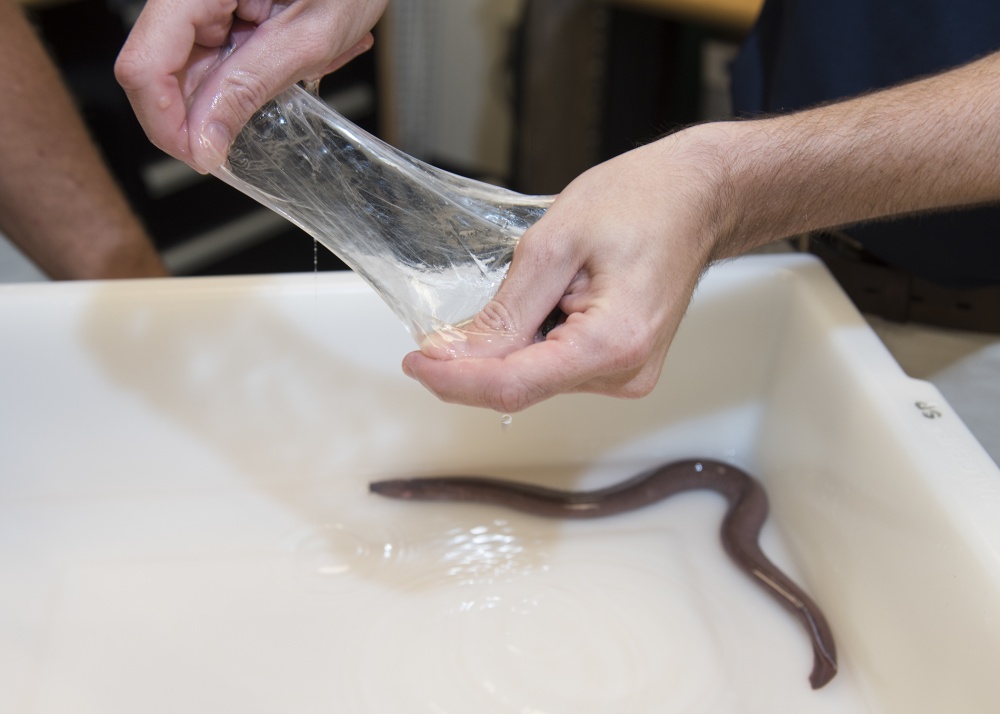Slimy Defense: Hagfish-Inspired Slime Could Protect Navy Warships

The U.S. Navy's new hero may be a knight in slimy armor.
A team of scientists and engineers with the U.S. Navy is taking inspiration from the natural world to develop a new defense tool. The researchers are using slime from the bottom-dwelling hagfish to create a new synthetic material that could act as another layer of defense on warships.
Pacific hagfish, also known as slime eels, secrete their protective slime to obstruct the gills of predators. The slime's properties are comparable to those of Kevlar, the synthetic fiber used in protective gear such as combat helmets and bulletproof vests, according to Josh Kogot, a biochemist with the Navy. [Biomimicry: 7 Clever Technologies Inspired by Nature]
"The synthetic hagfish slime may be used for ballistics protection, firefighting, anti-fouling, diver protection or anti-shark spray," Kogot said in a statement from the Navy. "The possibilities are endless. Our goal is to produce a substance that can act as non-lethal and non-kinetic defense to protect the warfighter."
Two protein-based components — a thread and a mucin (a mucus protein) — make up the hagfish's slime. The thread is like a coil, quickly unraveling when it comes into contact with water, while the mucin binds to water, restricting the flow, said Ryan Kincer, a materials engineer with the Navy. When the thread and mucin interact with the water, a three-dimensional network of slime is created, and that 3D slime can expand to be up to 10,000 times its initial volume, Kincer said.
In the Navy's latest example of biomimicry — using ideas from nature to solve human problems — the team recreated the slime's distinctive alpha and gamma proteins. Next, the scientists will focus on refining the synthetic slim and mass producing it.
"Researchers have called the hagfish slime one of the most unique biomaterials known," Kincer said. "For the U.S. Navy to have its hands on it, or a material that acts similar, would be beneficial."
Get the world’s most fascinating discoveries delivered straight to your inbox.
Original article on Live Science.



